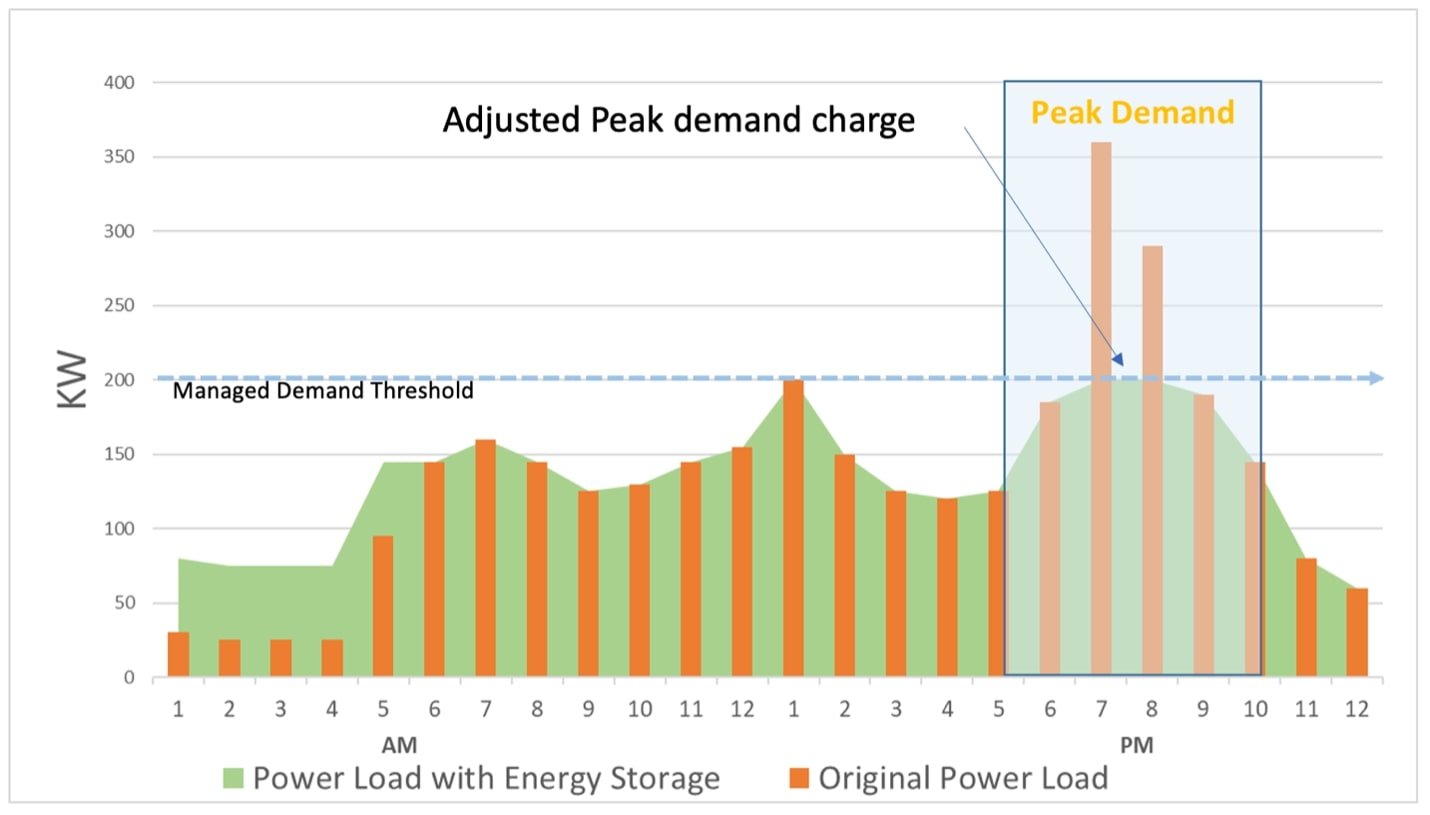Energy Storage Applications & Benefits

Over the last decade, the energy storage industry has continued to evolve, adapt, and innovate. According to Smart Energy International, the battery energy storage market is expected to grow by 23% by 2030. Battery energy storage systems (BESSs) will play a major role in building a resilient energy infrastructure while bringing cost savings to commercial and industrial utilities and consumers. There are a wide variety of energy storage applications that serve a number of different purposes and benefits. These benefits can be related to cost-saving, reducing carbon emissions, or improving the grid. In this blog, we will go over the main applications that best take advantage of BESS, and the benefits and solutions associated with it.
Energy Arbitrage
The first of many energy storage applications is Energy Arbitrage. Energy Arbitrage is the idea of buying electricity during off-peak hours when costs are low and using that electricity during peak periods when costs are at their highest. BESS is a great use case in this scenario helping to store the newly purchased electricity and holding it until it’s needed. Mainly used by grid operators, integrating a Battery energy storage system can be used to avoid purchasing electricity during on-peak hours, making it the most direct method for profiting from energy storage.

If we analyze the example above, we begin to understand the opportunities for Energy Arbitrage and how much energy costs. Electricity consumption is separated into three rates showing kWh used and total cost. In this case, 20% of energy used during peak hours costs nearly 1/3rd of the total bill.

Now using the same example but incorporating battery energy storage into the mix, electricity is purchased during off-peak rates, stored for later usage, and then used during on peak periods. The result in this case study consists in savings of nearly $14,000. Every country and municipality has different rates; therefore, it is recommended to speak to a BESS expert to determine if the numbers make financial and economical sense for your use case.
Peak Shaving/Demand Support
One of the most used energy storage applications is Peak Shaving (also known as Peak Charge or Demand Support). Peak Shaving is the idea of “shaving” off the highest point when electricity is consumed the most. Even though little electricity may be used throughout the day, the electricity bill is based off your peak demand.

Battery energy storage can be used to shave the peak demand to a point that is most optimal. Instead of pulling from the grid, the BESS is charged when electricity is not in use, and then during peak hours, the BESS is discharged to prevent peak demand from passing the managed threshold. Peak Shaving is a valuable application for EV Charging solutions and when paired with Condominiums.
Frequency Regulation/Voltage Support
Frequency regulation involves regulating the AC current within acceptable boundaries. The electrical grid transmits power to end users at a fixed alternating current (AC) frequency, for example 60Hz in North and South America and 50Hz for Europe and Asia. When power generation is equal to power usage, the frequency is stable. If usage is higher than generation, the frequency drops causing blackouts. When power generated exceeds the demands of the grid, the frequency rises which can damage the grid and connected devices.
It is important to analyze the grid and understand the physical requirements for reliable frequency response. Joe Eto of Lawrence Berkeley National Laboratory illustrates below how frequency regulation works using the analogy of water level in a container.

Critical Back-Up Power
One of the most important energy storage applications for industrial users is critical back up power. Unpredictable and extreme weather conditions continue to decimate the grid leaving thousands of homes and businesses without electricity. Energy storage can play a massive role in strengthening resilience with the ability to operate separate from the grid, serving as a backup energy supply when the electric grid is interrupted.
Battery backup power can supply immense value to businesses during times when the grid is unavailable. Businesses and utility companies can save thousands of dollars in lost production, spoilage, and assembly times. These loses could be avoided with the help of a robust BESS paired with renewable energy source that supplements charged energy during power outages.
Renewable Integration
One of the advantages of battery energy storage is pairing the system with solar panels. Solar panels themselves are a great addition to a residential home or commercial building, but during the midday when the sun is at its peak, solar is over producing which is wasted because solar panels have no way of storing energy.

In the example above, TROES’ solution uses the excess power to charge the battery energy storage system, and when solar falls off and is no longer producing, the BESS is discharged throughout the evening minimizing the energy demand. BESS and solar photovoltaics together are a wonderful combination that can be used in different applications such offering even greater cost-saving advantages.
Lead Acid & Diesel Replacement
In the last 20 years, lead acid and diesel have been a staple for specific applications thanks to its mature technology and low start-up cost. As climate change becomes an increasing priority, lead acid and diesel are no longer reliable options due to the dangers, maintenance, cost, time, and reliability issues. Lead Acid & Diesel Augmentation/Optimization is one of the best energy storage applications for businesses and remote islands that are seeking to use less fossil fuels.
Battery energy storage is the key to transition away from fossil fuel dependence, while relying on clean energy. While both diesel generators and lead-acid cost less up front than a lithium-ion powered BESS, in the long run, the benefits of batteries outweigh on multiple occasions while providing instantaneous load response. Lithium-ion batteries have a longer lifespan and higher efficiency whole not requiring maintenance, fuel costs, and even reduce your monthly bill thanks to no carbon emissions.
Future of Energy Storage
Global efforts for climate change have caused a ripple effect in the energy storage space. This is especially true as battery technology matures and solar prices fall, coupled with government subsidies, have encouraged consumers to switch to clean renewable sources of power. TROES’ microgrid-based battery solutions takes advantage of different energy storage applications to address the power demand issues of commercial and industrial buildings. For more information on TROES’ BESS products and solutions, connect with us.






